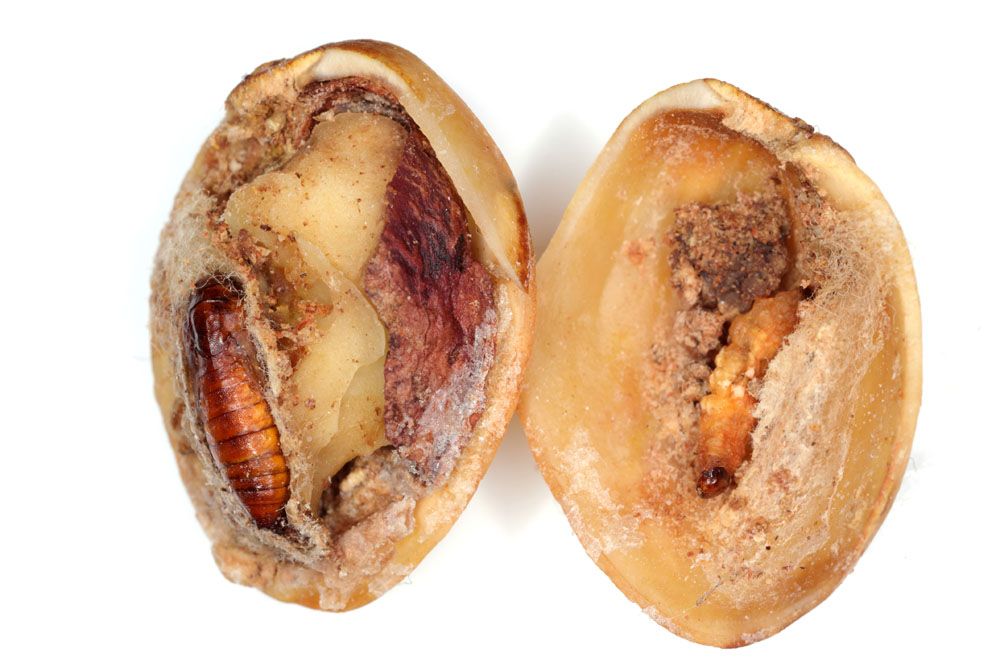
Navel Orangeworm – Amyelois transitella
Navel Orangeworm: Appearance, Territory, Damage and Life Cycle
Latin Name: Amyelois Transitella
Appearance: The body is white to pink, with a dark reddish-brown head. On the second segment behind the head, there is a distinct pair of crescent-shaped marks. They are tiny when they hatch, but as they mature, they can reach lengths of 13–19mm.
Hosts Plants: The nave Orangeworm (Amyelois Transitella) is an invasive pest that may harm nut and fruit crops such pistachios, almonds, and walnuts, as well as citrus, dates, figs, grapes, apples, pears, and stone fruit.
Territory: The navel Orangeworm, Amyelois Transitella, was described by Francis Walker in 1863 and is indigenous to the tropical Western Hemisphere, including the southern United States. Its abundance rose dramatically in California throughout the first part of the twentieth century.
Damage Insect Cause: Last year’s nave Orangeworm damage was severe, owing in part to increasing acreage. They may fly up to a quarter-mile to locate a new host. Amyelois Transitella, the navel Orangeworm, may cause significant economic losses for almond producers, costing more than $1,700 per acre when 20 percent of the nut harvest is affected.
Life History and Habits: Larvae develop from eggs in 4 to 23 days, depending on environmental circumstances. Larvae form a cocoon in which they pupate (change into adult moths). Adult moths’ mate and resume their life cycle after emergence. Under ideal conditions, the navel Orangeworm can be active all year.
